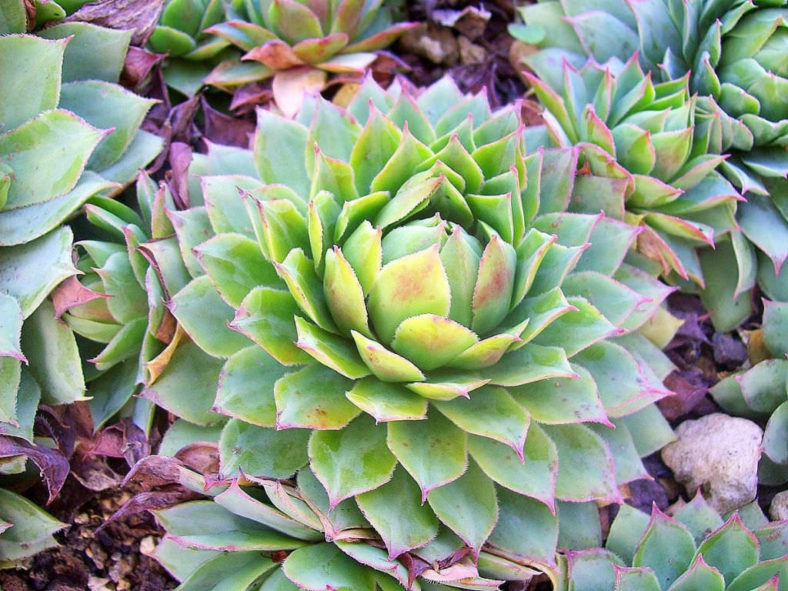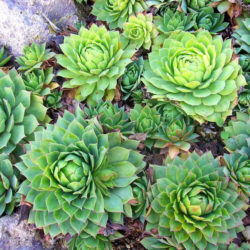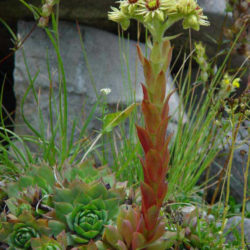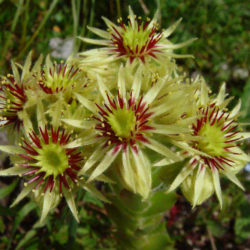Scientific Name
Sempervivum wulfenii Hoppe ex Mert. & W.D.J.Koch
Common Name(s)
Hen and Chicks, Houseleek
Synonym(s)
Sempervivum globiferum, Sempervivum wulfenii subsp. wulfenii
Scientific Classification
Family: Crassulaceae
Subfamily: Sedoideae
Tribe: Sedeae
Subtribe: Sedinae
Genus: Sempervivum
Origin
This species is found across most central and eastern Alps (Switzerland, Austria, and Italy).
Description
Sempervivum wulfenii is a succulent plant that forms rosettes of fleshy grey-green leaves with a purple-red base and darker tips. The rosettes grow up to 4 inches (10 cm) in diameter, producing offsets on stout, up to 4 inches (10 cm) long stolons. Leaves are oblong to spathulate, up to 1.2 inches (3 cm) long, and up to 0.6 inches (1.5 cm) wide. They are glabrous on both surfaces and with cilia on the margins.
Flowers are lemon-yellow, up to 1 inch (2.5 cm) across, and appear in compact clusters at the top of an up to 12 inches (30 cm) tall stem in summer. The flower stem is covered with downy leaves, slightly recurved at the tips. The rosette dies after flowering.

Hardiness
USDA hardiness zone 4b to 9b: from −25 °F (−31.7 °C) to 25 °F (−3.9 °C).
How to Grow and Care
Sempervivums are not difficult to grow, provided they are not waterlogged and killed from excess watering. They can be easily grown outdoors and in containers, and they earned the name "Houseleeks" from their tendency to root on the roofs of houses. After the mother plant flowers, it will naturally die, but the plant has likely produced many offsets that will continue to grow by this time. These are excellent for cold windows. Sempervivum earned their popular name, "Hen and Chicks," from their growth habit. The mother plant, or hen, sends off numerous offsets clustered around her base like chicks. These offsets can be easily repotted, or the plants can be left to form a clumping mat.
Repot as needed, preferably during the warm season. To repot a succulent, ensure the soil is dry before repotting, then gently remove the pot. Knock away the old soil from the roots, removing any rotted or dead roots. Treat any cuts with a fungicide. Place the plant in its new pot and backfill it with potting soil, spreading the roots out as you repot. Leave the plant dry for a week or so, then begin to water lightly to reduce the risk of root rot.
See more at How to Grow and Care for Sempervivum.
Links
- Back to genus Sempervivum
- Succupedia: Browse succulents by Scientific Name, Common Name, Genus, Family, USDA Hardiness Zone, Origin, or cacti by Genus
Photo Gallery
Click on a photo to see a larger version.


